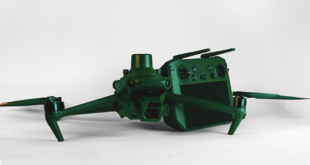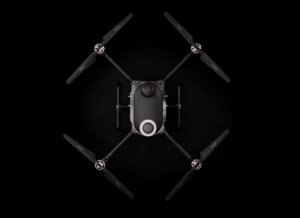
Skyfish M4
Is the Blue sUAS list actually hurting the domestic drone industry? These manufacturers say it is – and are asking Congress to address the problem.
Disclosure: DRONELIFE has a client relationship with drone manufacturer Skyfish. This article is not a sponsored post: DRONELIFE received no payment for publication.
NDAA compliant US drone manufacturers say that the General Services Administration (GSA) adoption of the Blue sUAS list as criteria for purchase is killing their businesses – and innovation in the US drone industry.
Two US drone manufacturers – Terraview and Skyfish – petitioned Congress last week to remove the Blue sUAS requirement from GSA procurement systems (see full text of letters below.) The manufacturers claim that the use of the Blue sUAS list as an assurance of a secure platform has gone far beyond the intended purpose – and is causing material damage to NDAA compliant US drone manufacturers.
NDAA Compliant US Drone Manufacturers vs. the Blue sUAS List
Section 848 of the FY20 National Defence Authorization Act, titled “Prohibition on operation or procurement of foreign-made unmanned aircraft systems,” along with Executive Order 13981, “Protecting the United States from Certain Unmanned Aircraft Systems,” laid out the U.S. government’s framework for prohibiting the use and procurement of foreign-made drone technology for U.S. government agencies, and outlined the specific requirements for compliance with security measures, referred to as NDAA compliance.
Many US manufacturers invested heavily in NDAA compliance: but in the meantime, government agencies including the GSA simply adopted the Blue sUAS list, rather than evaluate each applicant against the NDAA criteria.
The Blue sUAS list was originally published in August of 2020, and the original Blue sUAS list was comprised of 5 specific drone platforms that had been developed in collaboration with the Defense Innovation Unit (DIU) to provide short-range reconnaissance on vetted platforms for U.S. defense. The second Blue sUAS list – or the “Blue sUAS 2.0” – named 11 vendors, and was designed in part to establish a process by which other manufacturers may be added. The process of establishing a framework to open the list is moving slowly, however – and in the meantime, say US manufacturers not included on the list, the domestic drone industry is being stifled.
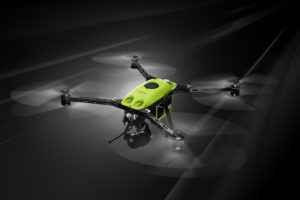 Both Terraview and Skyfish applied for inclusion on the Blue sUAS 2.0 list, but were told that the DIU lacked the funding and resources to evaluate their platforms: a problem exacerbated by their efforts to comply with NDAA requirements and manufacture their own parts entirely in the U.S., rather than sourcing ready made components from overseas.
Both Terraview and Skyfish applied for inclusion on the Blue sUAS 2.0 list, but were told that the DIU lacked the funding and resources to evaluate their platforms: a problem exacerbated by their efforts to comply with NDAA requirements and manufacture their own parts entirely in the U.S., rather than sourcing ready made components from overseas.
“We’re building everything from scratch in the US, we’re not just an integrator,” says Orest Pilskalns, CEO of Skyfish. “There is no reward for building something entirely in the United States – in fact because it’s more work to evaluate those pieces, being ‘too American made’ is a downside.”
“The Blue sUAS list was never designed to be a gate-keeper for federal government procurement,” says Bruce Myers, Terraview CEO. “It’s actually stifling competition… The DIU never intended the Blue sUAS list to be the be all end all. ”
Michael Kelly, Terraview’s VP of Global Sales, says the alternative is very clear: “The GSA and other federal agencies should be relying on compliance with Executive Order 13981 and the language in the Defense Authorization Act – the executive order outlines exactly what is required.”
“The real goal was to avoid potential security issues, and to avoid doing business with blacklisted companies. We and other US-based manufactures more than meet those requirements,” says Kelly.
Pilskalns agrees. “Using the Blue sUAS list as a criteria is doing exactly the opposite of what the NDAA was designed to do – it’s crushing innovation in the U.S. drone industry,” he says. “FY20 NDAA is the law, passed by Congress, and the federal government should follow that law. The Blue sUAS list and the NDAA are two different things.”
Unintended Consequences
Since the GSA adopted the Blue sUAS list as a criteria for inclusion, business for those companies not included on the list has become far more difficult. While the GSA maintains that those companies not on the list can still access government customers, Myers says that the workaround isn’t a reasonable solution to the problem.
“The workaround is that an agency can issue a full RFP, which adds time and costs to the procurement process. That’s making it harder on government clients as well as stifling competition,” says Myers. “Many companies don’t understand federal government contracting. It’s not easy – you need a contract vehicle.”
The GSA’s adoption of the Blue sUAS list has had an effect on more than federal purchasing. State and local governments, often without the expert resources to evaluate sUAS platforms, have also begun to adopt the list as an expedient to insuring secure technology.
John Livingston, Skyfish Chairman, says that exlusion from the Blue sUAS list is a serious detriment to growth. “This is crushing the domestic drone industry – if you aren’t on the list you can’t compete for government or state business. It has an enormous impact,” says Livingston.
“Additionally, this is a killer for financing. What Blue sUAS has done is to imply a “seal of approval”. And without it, it’s hard to get capital,” he says. “It’s a very painful thing to not be included on this list as a US drone manufacturer – it puts you out in the cold.”
“We admire what the DIU is doing, it’s an important function. But it’s gone far beyond that – this list has been pushed and promoted well beyond what it was intended for. This has had exactly the opposite effect from what everyone wanted: to encourage innovation in the U.S. drone industry.”
“The federal government needs to allow the market to work freely, and innovation to take place,” agrees Myers. “That’s how the US will catch up in this space.”
See text of letters to Congress, written by TerraView and Skyfish below:
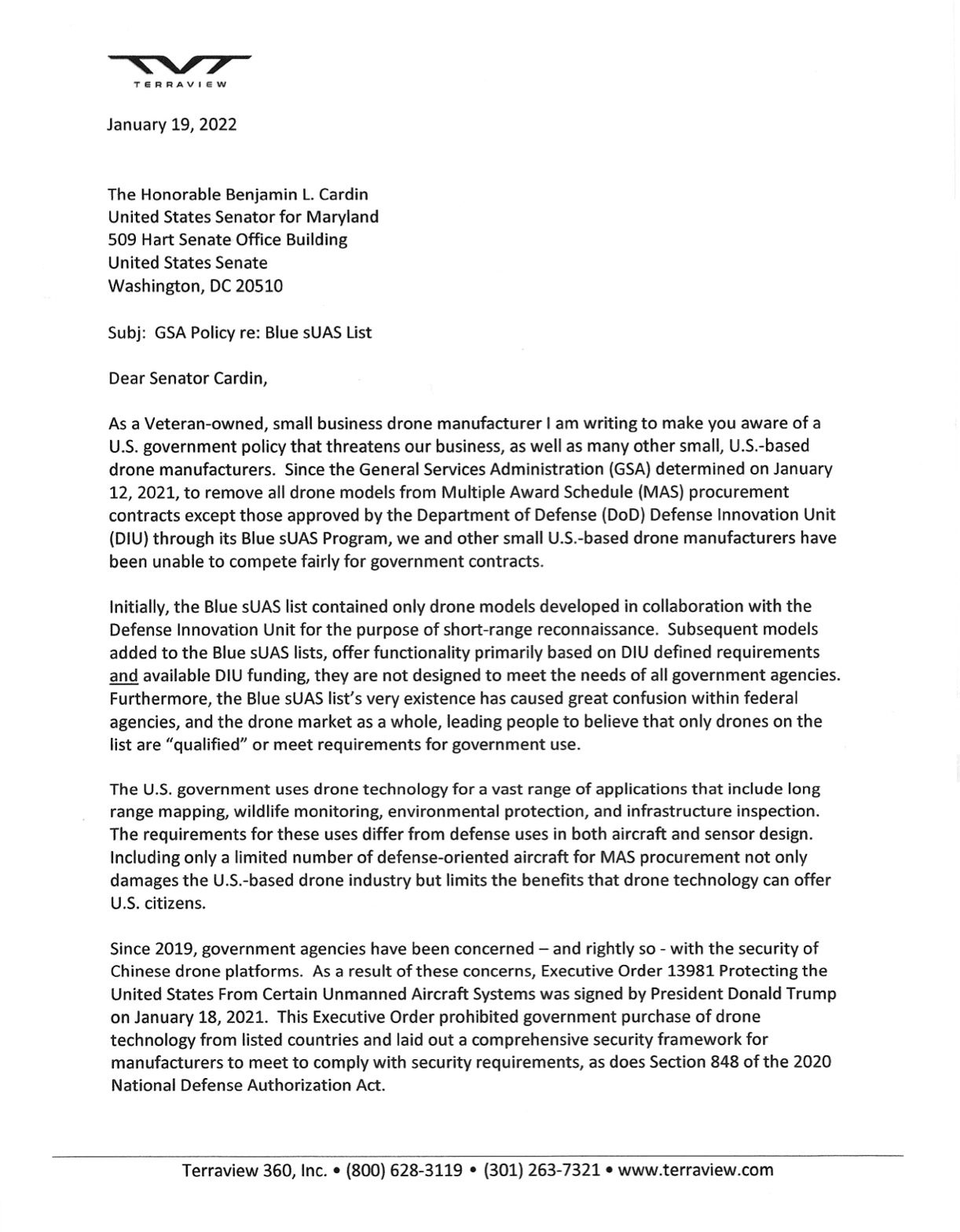
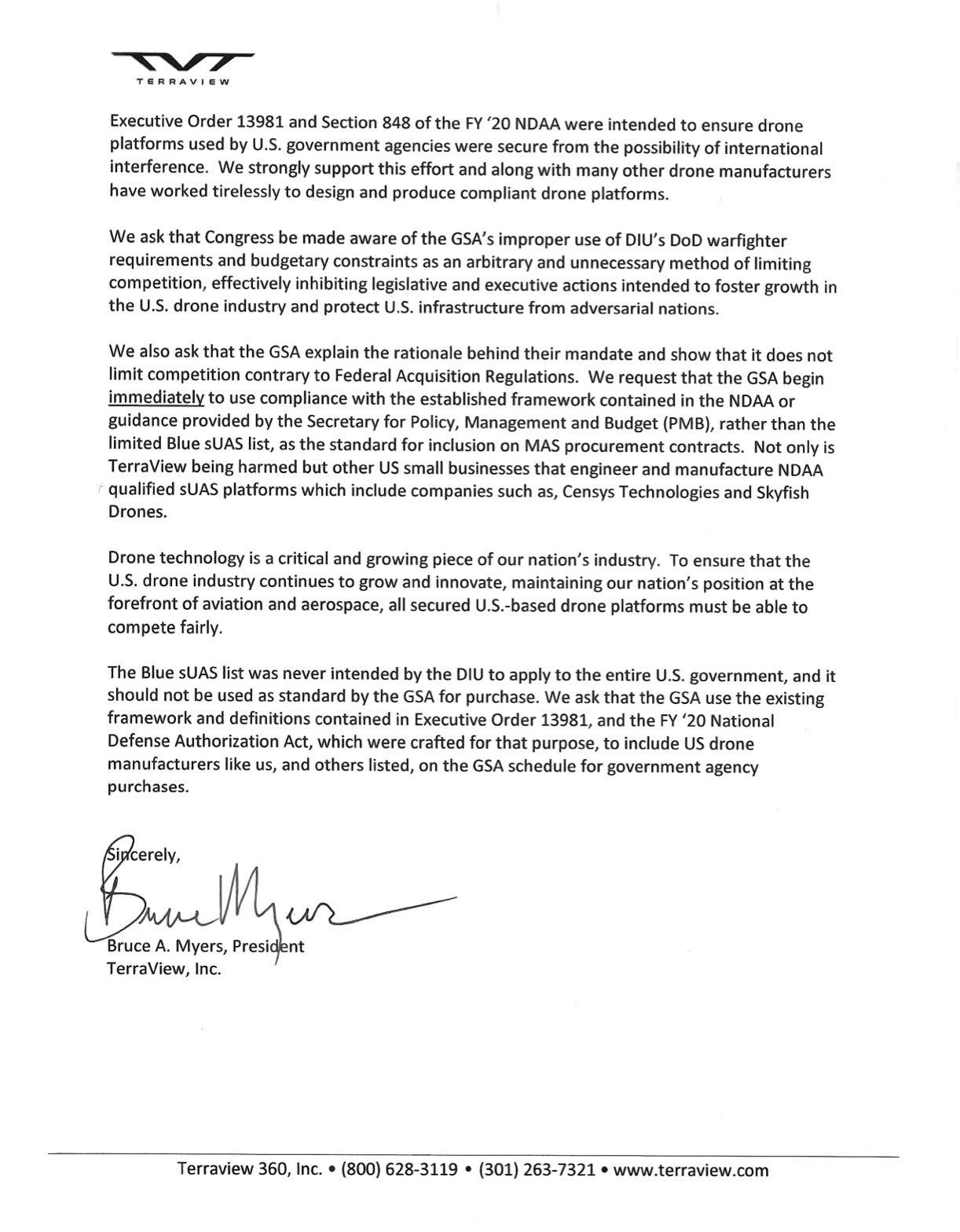
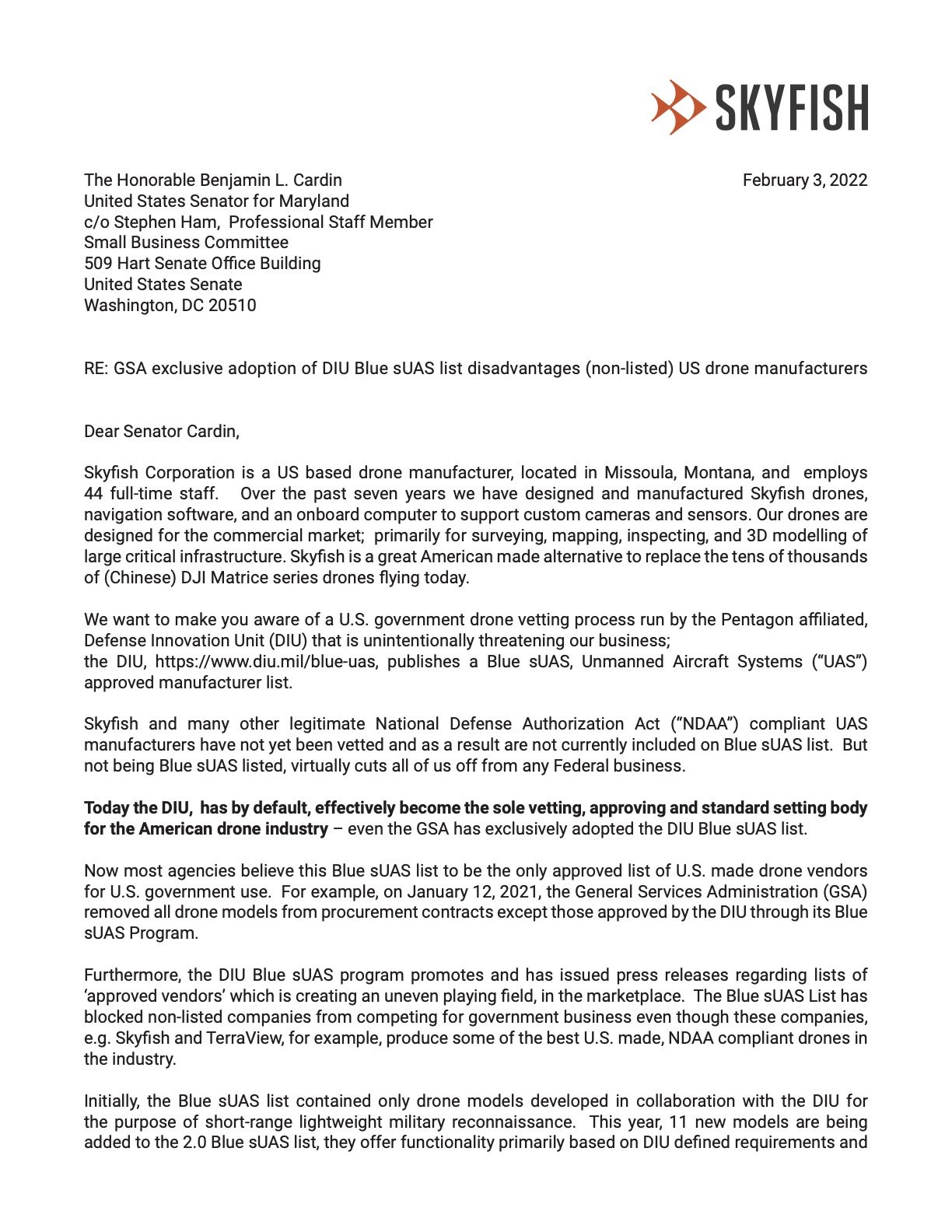
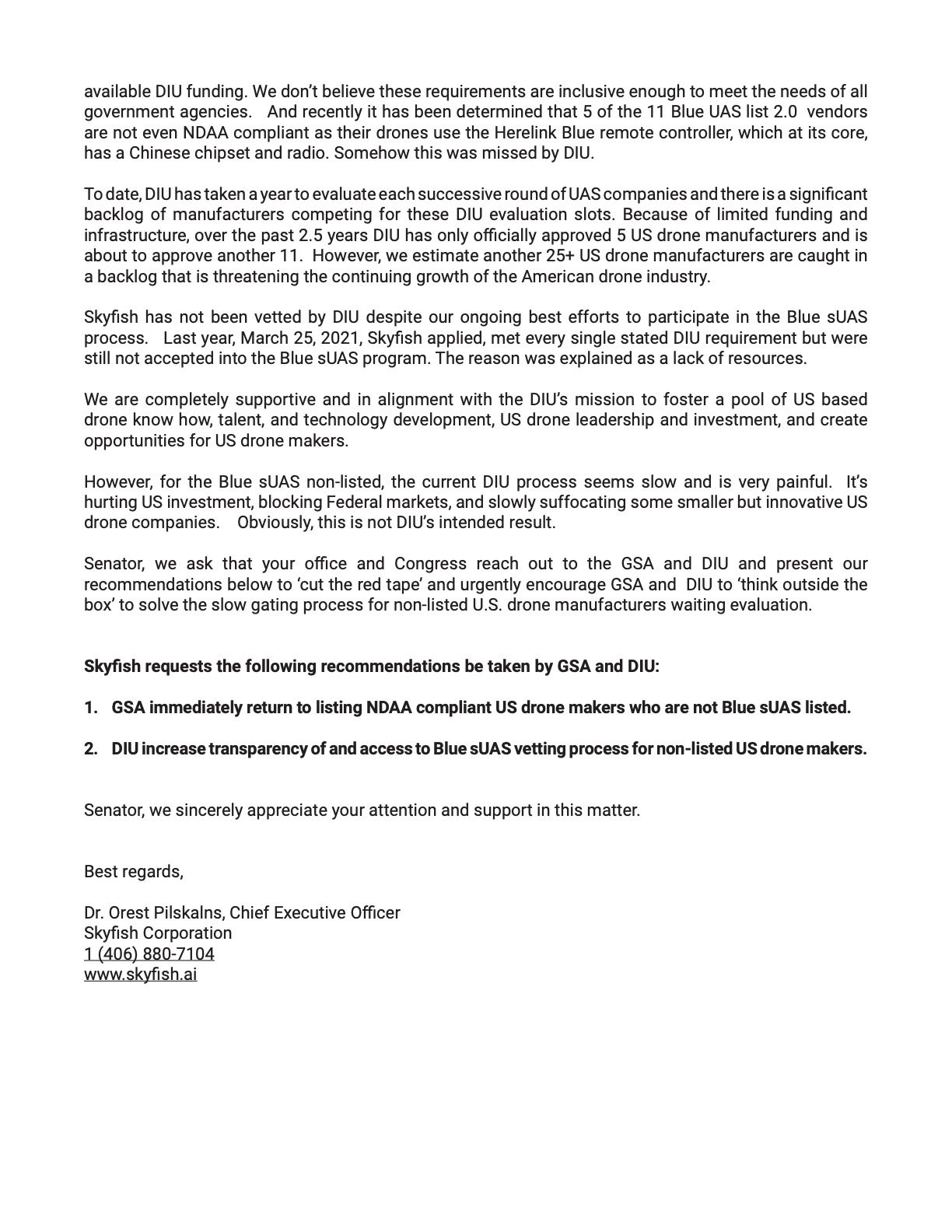
Miriam McNabb is the Editor-in-Chief of DRONELIFE and CEO of JobForDrones, a professional drone services marketplace, and a fascinated observer of the emerging drone industry and the regulatory environment for drones. Miriam has penned over 3,000 articles focused on the commercial drone space and is an international speaker and recognized figure in the industry. Miriam has a degree from the University of Chicago and over 20 years of experience in high tech sales and marketing for new technologies.
For drone industry consulting or writing, Email Miriam.
TWITTER:@spaldingbarker
Subscribe to DroneLife here.
https://dronelife.com/2022/02/12/ndaa-compliant-us-drone-manufacturers-petition-congress-to-remove-blue-suas-requirement-from-gsa/
 Unmanned Aerial Vehicle The latest drone news
Unmanned Aerial Vehicle The latest drone news



